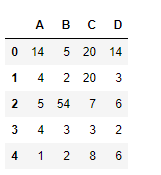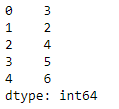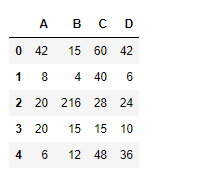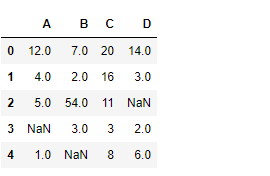Python Pandas dataframe.mode()
Python是一种进行数据分析的伟大语言,主要是因为以数据为中心的Python包的奇妙生态系统。Pandas就是这些包中的一个,它使导入和分析数据变得更加容易。
Pandas dataframe.mode()函数沿选定的axis获取每个元素的模式。为每个标签的每个模式添加一行,用nan来填补空白。注意,所选axis可能有多个值返回(当多个项目共享最大频率时),这就是为什么要返回一个数据框架的原因。
语法:
DataFrame.mode(axis=0, numeric_only=False)
参数 :
axis:获得每列的模式1,获得每行的模式
numeric_only : 如果为真,只适用于数字列
返回:模式。DataFrame (sorted)
例子#1:使用mode()函数来查找索引axis上的模式。
# importing pandas as pd
import pandas as pd
# Creating the dataframe
df=pd.DataFrame({"A":[14,4,5,4,1],
"B":[5,2,54,3,2],
"C":[20,20,7,3,8],
"D":[14,3,6,2,6]})
# Print the dataframe
df

让我们使用dataframe.mode()函数来查找dataframe的模式。
# find mode of dataframe
df.mode()
输出 :

例子#2:使用mode()函数来寻找列axis上的模式。
# importing pandas as pd
import pandas as pd
# Creating the dataframe
df=pd.DataFrame({"A":[14,4,5,4,1],
"B":[5,2,54,3,2],
"C":[20,20,7,3,8],
"D":[14,3,6,2,6]})
# Print the dataframe
df

让我们使用dataframe.mode()函数来寻找模式。
# axis = 1 indicates over the column axis
df.mode(axis = 1)
输出 :

在第0和第3行中,14和3是模式,因为它们的出现频率最高(即2)。在其余各列中,所有元素都是模式,因为它们的出现频率相同。
 极客教程
极客教程